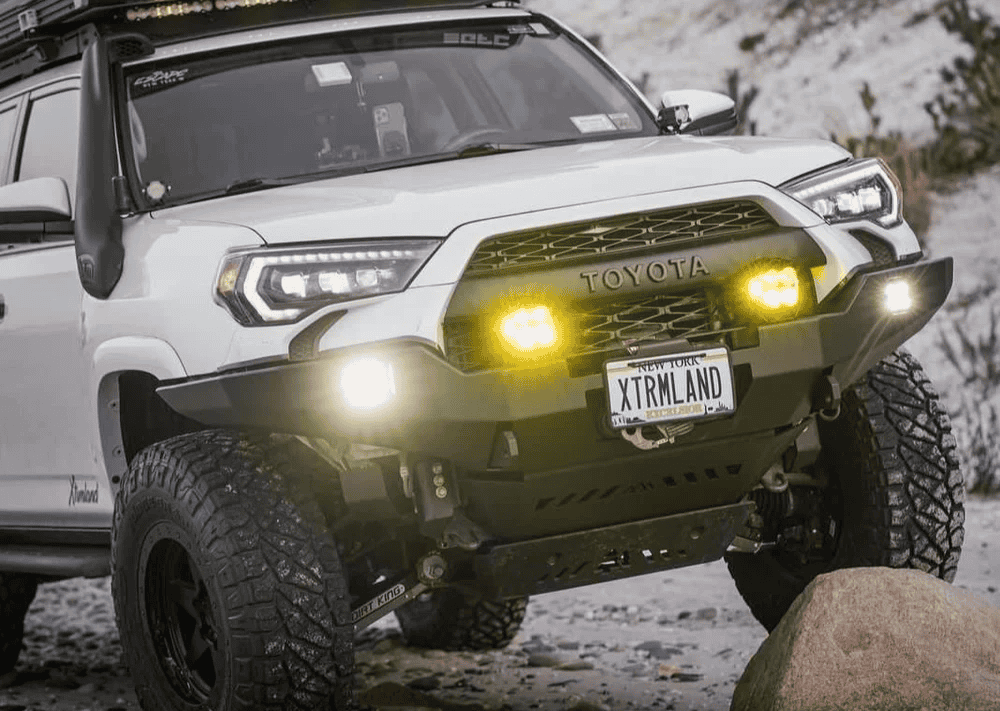Overland Vehicles

Mud punishes sloppy setups and lazy maintenance. Start with traction. Large void mud terrain tires clear clay by flinging it away, which keeps edges biting. Tall sidewalls improve deflection and contact patch when you air down, helping the lugs reach through slime to firmer ground. Wheel width should suit the tire so the sidewalls work rather than bulge awkwardly. Beadlock wheels are helpful for very low pressures, but proper torque and frequent checks are non negotiable whether you run traditional wheels or beadlocks.
Clearance matters as much as traction. A modest lift paired with correct bump stop and shock tuning avoids packing mud into fenders and protects wheel wells under compression. Skid plates shield the engine, transmission, and transfer case when ruts hide logs and rocks. Rock sliders double as pivot points when a rut shoulders the truck. Keep the underbody clean so you can spot fresh scrapes or leaks.
Water crossings demand caution. Slow entries reduce bow waves and protect fans and belts. Know your wading depth, and do not linger mid stream. After crossings, tap brakes lightly to dry rotors. If the trail looks deeper than expected, walk it first. Mud looks flat until a buried hole swallows a hub.
Torque delivery should be predictable. Low range lets the engine spin in its happy zone while the tires turn slowly, which reduces wheelspin and heat. Locking differentials and intelligent traction control both have a place. A rear locker helps push through ruts; a front locker can pull the nose straight but needs finesse on steering. If your truck uses brake based traction control, a gentle throttle gives the system time to apportion torque without boiling pads.
Gearing must match tire diameter. Oversize tires dull throttle response and raise effective gearing, so consider axle ratio changes to bring power back into the usable band. Smooth throttle mapping helps in slick clay where sudden spikes break traction. Hill start assist, crawl modes, and trail turn aids can help, but practice in safe areas first to learn their behavior in mud.
Carry a quality winch sized for your gross weight, plus a tree saver, soft shackles, and a kinetic rope for controlled tugs. Traction boards help in shallow bogs where a winch anchor is unavailable. A compact shovel and a small folding saw clear ruts and roots before they stop your momentum. Keep gloves and a tarp handy to manage filthy gear when it is time to pack up.
Mud seeks every gap, so waterproofing pays off. A snorkel raises the air intake to cleaner, drier air. Extend axle, transmission, and transfer case breathers so pressure changes do not suck in silty water. Use dielectric grease on critical connectors, inspect door and hood seals, and keep drain holes open so water can escape. Add a transmission cooler if you tow or crawl slowly with heavier tires.
Armor should be purposeful, not just heavy. Engine and trans skids, lower control arm guards, diff covers with proper clearance, and a fuel tank skid are common high value pieces. Choose designs that shed mud rather than trap it. Mud packed armor adds weight, creates heat, and hides damage. Consider fender liners that resist abrasion and clean easily.
After every muddy day, rinse the undercarriage thoroughly. Replace or clean air filters as needed, and consider a pre filter in dusty trails that turn to paste after storms. Check differential and transfer case fluid for milkiness, and service wheel bearings and u joints more frequently. A few minutes on a creeper prevents expensive surprises.
Tread lightly. Avoid spinning holes deeper, and take existing lines rather than creating new scars. If a route is closed or saturated beyond passable, turn around. The best drivers know when to save the trail for another day. Pack out trash, clean up any gear that drips, and leave the site better than you found it.
Building toward mud performance does not mean suffering on the highway. Choose balanced tires, keep alignment in spec, and use sound deadening where practical so long transfers remain calm. A well tuned suspension and proper gearing turn a loud, bouncy setup into a quiet traveler that still claws through clay.
Mud expertise is not just parts. It is a system. Tire choice, gearing, traction aids, waterproofing, and diligent maintenance work together. Test your setup in stages and keep notes. The goal is consistent progress with minimal drama when the trail turns into a chocolate river.
When you want that system dialed end to end, partner with builders who treat mud as its own discipline. Explore Overland rigs suited for slick clay, ruts, and water crossings, then refine the details with a focused Custom overland upfit. If you are comparing shops, this quick read explains our process and standards for long term reliability: Why choose OZK Customs.
Ready to map your build in Fayetteville Arkansas with a team that tests on real southern mud and river bottoms? Tell us how you travel, what you carry, and the conditions you face most. We will translate that into a clear plan, schedule, and a rig that earns trust when the trail turns sloppy.
Ready to spec a dependable mud focused build that still shines on long highway transfers and remote travel days? Share your goals and timeline and our Fayetteville team will map a clear plan, parts list, and schedule. From full builds to targeted upfits, we will turn your wish list into a capable, quiet, and trail proven truck.
ADDRESS:
6159 E Huntsville Rd, Fayetteville, AR 72701
PHONE:
(479) 326-9200
EMAIL:
info@ozkvans.com